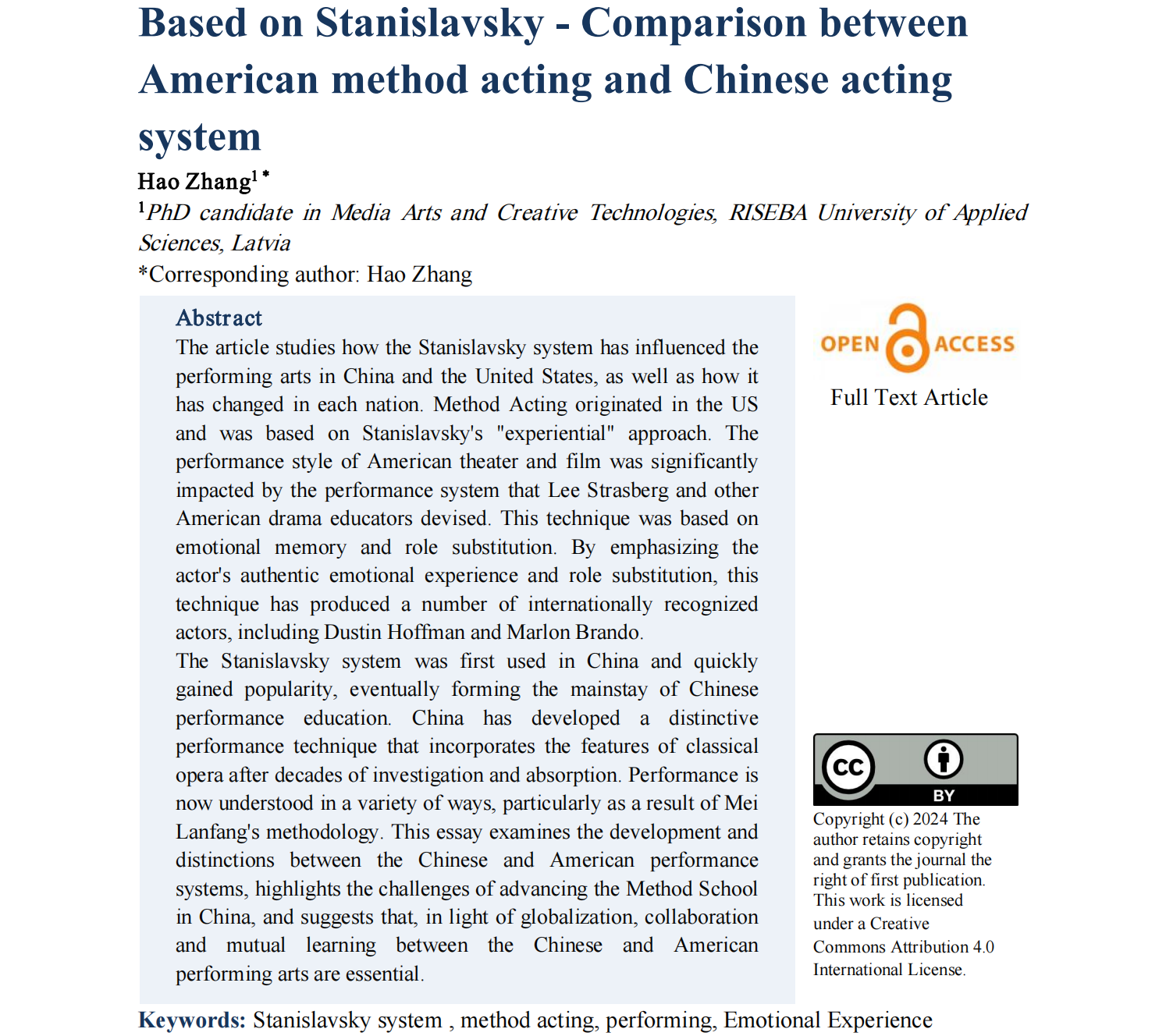Based on Stanislavsky - Comparison between American method acting and Chinese acting system
DOI:
https://doi.org/10.5281/zenodo.14224217Keywords:
Stanislavsky system, method acting, performing, Emotional ExperienceAbstract
The article studies how the Stanislavsky system has influenced the performing arts in China and the United States, as well as how it has changed in each nation. Method Acting originated in the US and was based on Stanislavsky's "experiential" approach. The performance style of American theater and film was significantly impacted by the performance system that Lee Strasberg and other American drama educators devised. This technique was based on emotional memory and role substitution. By emphasizing the actor's authentic emotional experience and role substitution, this technique has produced a number of internationally recognized actors, including Dustin Hoffman and Marlon Brando.
The Stanislavsky system was first used in China and quickly gained popularity, eventually forming the mainstay of Chinese performance education. China has developed a distinctive performance technique that incorporates the features of classical opera after decades of investigation and absorption. Performance is now understood in a variety of ways, particularly as a result of Mei Lanfang's methodology. This essay examines the development and distinctions between the Chinese and American performance systems, highlights the challenges of advancing the Method School in China, and suggests that, in light of globalization, collaboration and mutual learning between the Chinese and American performing arts are essential.
References
[1]Sweeney R, McNaughten B, Thompson A, et al. 2021, 7(1): ACTup: advanced communication training simulation enhanced by actors trained in the Stanislavski system[J]. BMJ Simulation & Technology Enhanced Learning, 35-37.
[2]PĂTrU C. 2018 (7).The Anniversary by AP Chekhov–Practical Application of the Stanislavski System[J]. DramArt. Revistă de studii teatrale, p111-125.
[3]White, R. Andrew.(2011) “Stanislavsky in America: An Actor's Workbook (review).” TDR: The Drama Review 55 : p173 - 175.
[4]TIAN, M. (2020). Mei Lanfang and Stanislavsky: The (De)construction of an Intercultural Myth on the International Stage. Theatre Research International, 45(3), p264-280
[5]Jiang, Hanyang. (2019). “By means of études: Boris Kulnev in an advanced actor training class in Beijing, 1955-1956.” Stanislavski Studies 8 p33 - 50.
[6]Hobgood, Burnet M. and Erika Munk. (1967). “Stanislavski and America.”
[7]Krause, Alvina and Christine Edwards. (1966) “The Stanislavsky heritage : its contribution to the Russian and American theatre.”.

Downloads
Published
How to Cite
Issue
Section
License
Copyright (c) 2024 hao zhang

This work is licensed under a Creative Commons Attribution 4.0 International License.


























